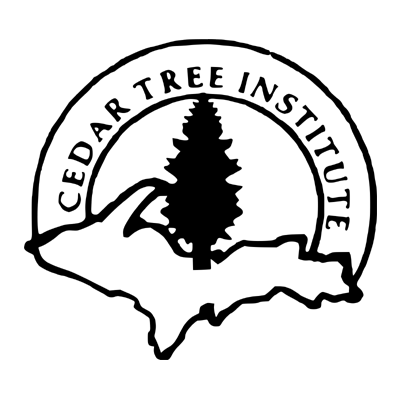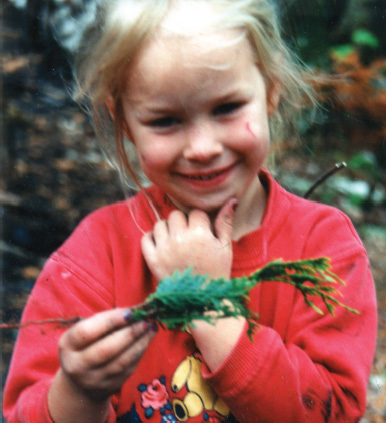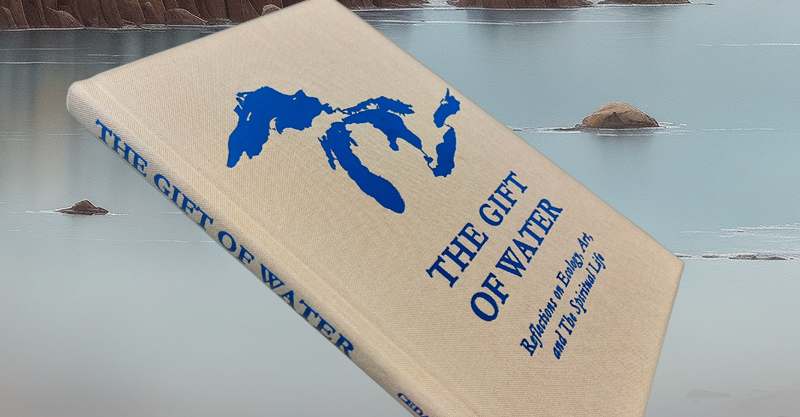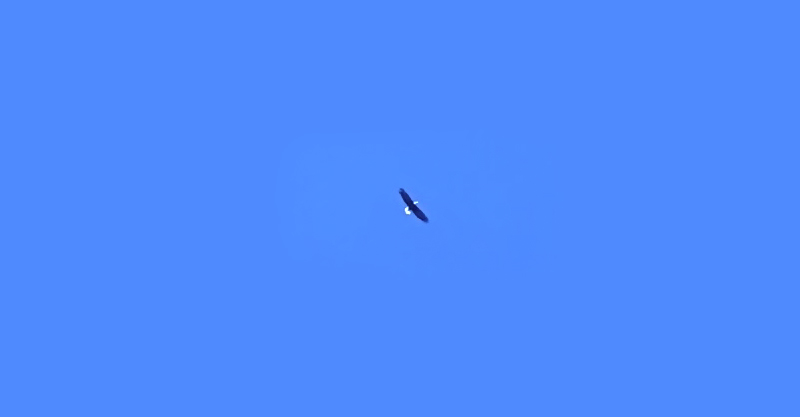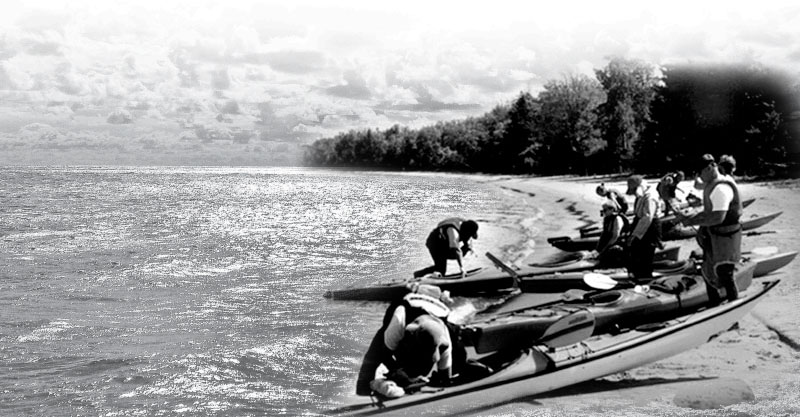For years I’ve walked along the shorelines of Lake Superior near our home, in every season, in all kinds of weather. I’m discovering it takes a lifetime to learn that everything is changing, everything is impermanent. For the young among us, such lessons are lost. We take for granted there will be no erosion of the riverbank we once fished from, that a tree we once climbed will never age and topple.
A few weeks ago I sat in a pew of the church in a far-off city where I was baptized. Years have gone by. I returned with my sister and her husband because a final decision is being made to officially close its doors. This was to be a last anniversary celebration. Fifty years ago it was a congregation of almost 900, now on Sunday mornings not more than 12 – 15 persons gather, most of them in the last years of their lives. The church’s location is in the roughest part of north Minneapolis. Drugs, transients, gangs and violence now shape this one-time quiet urban neighborhood where, as a boy, I played in front of a church parsonage on a set of streetcar (trolley) tracks.
When we become aware of the constant, unstoppable flow of things, we react, most often, with a response of grief and a longing for the past. Wise voices from the medical community warn us about the dangerous consequences, physical and emotional, of being stuck in such memories, either of sweet nostalgia or of bitterness. It’s healthy and appropriate to spend some time there, but not for long.
Spiritual teachers teach us that a clue for living in better balance is found in the wisdom of animals; they live in the power of a mindful now. Such places are shaped by measures of peace, alertness, immediacy. If we ponder how this Eternal Now intersects the emotionally frozen worlds where we spend the majority of our time, priorities become clearer, choices more intentional. We discover the between times are ultimately what shape the best of our hearts and spirits.
With idealized views of trees that never decay, of forests that never burn, we cling to a past, however appealing, that’s rigid and deadening. We forget nature leads us into a deeper insight of living. We begin to realize what ultimately matters most often arises out of our being rather than doing. Such moments of clarity appear in the midst of hectic lives, in circular places of quiet, fleeting grace, of rest, of Presence. In the coming year, in, around and under the many projects and work of The Cedar Tree Institute, I’ll by looking to meet you there.
-JWM
Journal Notes
On The Water
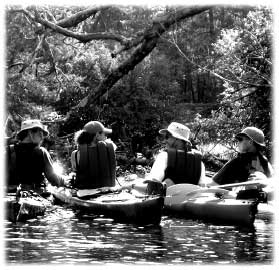
Our 2007 Spirit of Place kayak retreat took place in August, centering on the writings of Wendell Berry, a Kentucky poet, farmer and environmental writer. Special thanks to Lee Goodwin who served as co-facilitator and to Sue Belanger as our exquisite kayak instructor and guide. Eight participants from Florida, Wisconsin, Illinois and Michigan joined together for this annual engagement of landscape, community and spiritual reflection.
Unsung Heroes
Thanks to the support of John and Mary Argeropolous, The Cedar Tree Institute in 2007 launched two phases of a training program for “on-the-ground workers” in nursing homes and hospices. Eighty five patient care workers, custodians, kitchen and nursing staff from four nursing home facilities participated in 20 training sessions covering subjects that included resiliency training, stress management and mind-body techniques for enhancing personal balance and communication. Our team of Cedar Tree facilitators included Paul Olson, GLYD intern, Dr. Larry Skendzel, Dr. Michael Grossman, social worker Judy Krause and diabetes educator Ann Constance.
Unsung Heroes’ continuation will depend on further funding. For more information e-mail John Argeropolous at jargerop@nmu.edu or contact the Marquette Community Foundation at (906)226-7666.
The Janus Project
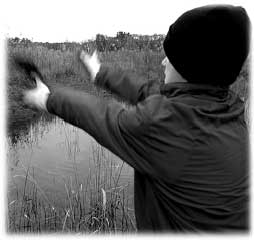
In 2000, a group of physicians, medical specialists, clergy and social workers met together for a training program about providing medical care for end-of-life patients. Coordinated by The Cedar Tree Institute, this project set into motion seven ensuing summer seminars and five winter symposiums.
These training programs are shaped by Mind/Body experiences (hiking, Tai Chi, kayaking, cross-country skiing) along with small group dialogues. This August, Greg Fricchione, Director of the Benson-Henry Institute for Mind/Body Medicine and a faculty member at Harvard Medical School, joined us with his son Jon for our four-day Janus summer retreat Sacred Ceremony. During his stay, Greg also provided a presentation at NMU on “Resiliency, Public Health and the New MInd/Body Medicine.”
Travels and Other Notes

The Cedar Tree continues to offer leadership for interfaith efforts in the area of mental health, religion and the environment. Thanks to a grant from the Northern Great Lakes Synod (ELCA), Project Hope provides confidential support to pastors and families around issues of mental health, emotional balance and emergency services.
In March, Judge Michael Anderegg and Susan LaFernier, Tribal Chair of the Keweenaw Bay Indian Community, traveled with CTI’s Director to San Diego for a National Conference on Juvenile Justice. They presented a workshop on CTI’s Manoomin Project.
In the spring of 2007, the Institute’s Director worked with Ray Weglarz and served as a co-presenter for a Keweenaw Home Care and Hospice conference in Calumet entitled: Beyond Hope and Fear: A Clergy Discussion on Spiritual Support a the End of Life.
In July, the Institute’s Director joined Carl Lindquist from the Superior Watershed Partnership to travel to Grand Rapids for a presentation to the Great Lakes and St. Lawerence Cities Initiative on EarthKeeper efforts here in Northern Michigan.
The Cedar Tree Institute’s Tai Chi classes and workshops continue in their regular format. The Cedar Tree Director also facilitated, with the assistance of Dr. Fred Maynard, a special workshop at Bay Cliff in September on health benefits of Tai Chi for Polio Syndrome survivors. We also thank Rick Pietila, San Shou instructor, who traveled with the band Stryper into South America. He tells us that lead singer Michael Sweet closed one of his concerts in Buenos Aires with a Tai Chi “blessing” learned from Rick via one of our Institute’s workshops.
Lake Superior Benefit Concert
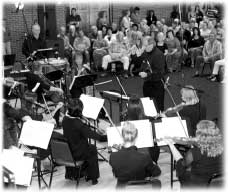
In July, a standing-room-only crowd of 350 people attended the first Lake Superior Day Benefit Concert at Upfront and Company in Marquette. It featured the Boreal Chamber Symphony led by Craig Johnson with interpretative dance numbers and the memorable Homeric hymn “To The Earth” by percussionist Carrie Biolo. Proceeds were set aside for the Superior Watershed Partnership and The Cedar Tree Institute to carry on environmental projects. Thanks to Garee Zellmer for her coordination of the event and to John and Pauline Kiltinen who were key sponsors. John is a retired math professor at NMU and also a poet. He shares with us his composition that captures seasonal life in Michigan’s Upper Peninsula, “Toes in a Brook, Nose in a Book.” This was first used as a tagline with WNMU TV13’s High School (academic) Bowl.
In Memoriam
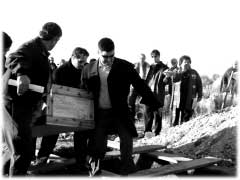
James Kelsey (1952-2007)
Bishop of the Episcopal Diocese of Northern Michigan and a member of The Cedar Tree Institute’s Advisory Council, Jim was one of our key organizers for the interfaith EarthKeeper Initiative in Michigan’s Upper Peninsula. Jim lost his life in a car accident in June on the Seney stretch in a remote part of Northern Michigan. He was a gracious man, unapologetically inclusive in his embrace of diverse lifestyles and various religious traditions. At his funeral, during the liturgical passing of the peace, they played music from the Rolling Stones’ “Jumpin’ Jack Flash.”
Lance Roberts (1942-2007)
Lance was a tree planter and a self-effacing, on-the-ground colleague, athlete and retired parish pastor in Northern Michigan. He enjoyed competition, one of a few clergy I know who always looked for a creative side of a conflict. He regularly played basketball at NMU’s gymnasium where we would, on occasion, meet. Lance carried his grandson Ivan on his shoulders when The Cedar Tree Institute planted the 1000th cedar tree in Michigan’s Upper Peninsula as part of the Institute’s Manitou Project in 2000.
An honoring song for Ramona Rank, February

Ramona Soto Rank (1944-2007)
A member of the Klamath Indian Tribe in Oregon, Ramona was an electric, charismatic personality in the Pacific Northwest, a “godmother” and guide for many of us into the complex worlds of “Indian Country.” She traveled and worked with tribes across North America and unabashedly built bridges between Native and Anglo spiritual worlds in creative and prophetic ways. She served the last years of her professional life as an ordained Lutheran pastor working with multicultural communities. In February, CTI’s Director traveled to Oregon to assist in her funeral in Portland. The next day he traveled over the mountains with her family (Larry, Larry Jr., Rebecca, Renee and Todd) for her burial on a hillside outside the reservation town of Beatty, Oregon.
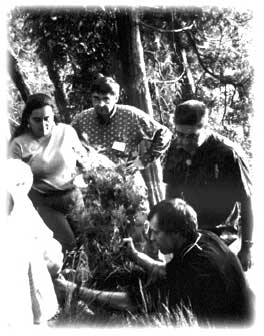
Herb Ringo (1929-2007)
A retired parish pastor and chaplain in Seattle, Herb was a soft-spoken, insightful theologian, father and husband. He enjoyed nuance, good literature and art. He could read the character of a person in a split-second. He enjoyed the insight of WH Auden: “Truth like love and art, prefers approaches that are not direct.” He was a personal friend of CTI’s Director, always radiating a balance a remarkable balance of modesty and personal dignity.
Robert Esbjornson (1918-2007)
Every college and university has been gifted in their history by “Master Teachers.” Robert Esbjornson ranked among the best of them. For thirty three years he served as a professor of religion at Gustavus Adolphus College. He carried on correspondence with hundreds of former students over the years and had an exceptional knack for designing creative, interactive learning experiences. In his early years as a pastor in small town in Minnesota, he unfolded a card table in the middle of the sanctuary aisle one Sunday morning and led the worship service and communion liturgy from there. His opening words: “This is where the Sacred Presence belongs. Right in the middle of us all.”
Operational Principles

1. The Cedar Tree Institute shall be firmly grounded in spiritual traditions. We reflect this commitment in our flexibility, unfolding vision, our projects and operational style.
2. The Institute will carry out its mission quietly and modestly. We do not target mass markets for its services or seek status for itself.
3. The Institute will own no property and acquire no debt.
Collaborative Partners
Lake Superior Binational Forum
Project Weave and the RWJ Foundation
MGH Family Care Doctors
Episcopal Diocese of Northern Michigan
Evangelical Lutheran Church of America (NGLS)
Department of Native American Studies, NMU
Keweenaw Bay Indian Community
Marquette County Juvenile Court
Superior Watershed Partnership
Bell Hospital
Roman Catholic Diocese of Marquette
Environmental Protection Agency (USEPA)
Marquette District, United Methodist Church
Keweenaw Home Nursing and Hospice
UP Home Health and Hospice
Lake Superior Hospice
Living In The Ecotone
by John Rosenberg
My colleague and good friend from The Cedar Tree Institute called the other night and asked if I’d write down some thoughts about the transition my wife and I are currently experiencing. In the past six months, both of us have taken new jobs. That means selling our home in Vancouver, Washington, where our family has lived for the past sixteen years and moving to a new place. Since August, Nancy’s been the principal of a large high school in Olympia, Washington, about a hundred miles north of here. Beginning in December, I begin my work as the pastor of the Lutheran Church of the Good Shepherd, also in Olympia. “You’re living in the ecotone, brother,” said Jon. “Tell us what it’s like.”
Regular readers of this newsletter know the ecotone as the transitional zone between two or more distinct habitats. William deBuys notes that “because it is a border zone where multiple sets of resources and opportunities become available, an ecotone tends to support greater biological diversity than either of the systems it mediates between.” Jon’s contention that there’s always action in the ecotone is correct. But as with any encounter with diversity, the challenge lies in trying to sort it all out. In thinking about what this transition has been like, several things come to mind: home, a sense of place, and pilgrimage.
Home: The most difficult thing about this move for me both spiritually and literally has been the effort to sell our home in Vancouver in a very difficult real estate market. Nancy spends her weeks in Olympia while I stay in Vancouver, commute twice a week to teach a class in Tacoma, and try to keep the house in presentable shape by “staging” it for potential buyers. If a sacred place is defined as a geographical location to which stories are attached, then this house has surely been that for our family. This is where our daughters grew up and where we’ve entertained our friends. In our circle, it’s always been known as “a great party house.” Now that everyone has left except for me and El Cid, the cat (our daughter, Britt, moved out in July), I sometimes feel like I’m keeping vigil with a dying friend. One irony is that we’re moving back to Nancy’s hometown; a place where I was ordained and where we spent the early years of our marriage. Home is an elusive but important concept that has taken on new meaning for me during this time.
Sense of Place: Like many westerners, I’ve learned to define my sense of place by the watershed where I’m currently dwelling. We’ve been living in the drainage of the Columbia River for the past 25 years. Since we came here in1982, I’ve tried to learn everything I could about the history and geography of this region. It’s shaped the way I think and even the way I preach. Now I’m in the process of moving to a new place and a new watershed, Puget Sound, and I find myself beginning to pay more attention to the patterns of weather, time and tide that are characteristic of that part of “Salmon Nation,” the bio-region defined as “anywhere the Pacific Salmon have ever run.”
Pilgrimage: During another time of transition, I made a pilgrimage to Santiago de Compostela, Spain. Along the way I learned some things about journeys and destinations. I used to think that life was about content and outcomes, traditional ways our culture measures success and failure. What I learned on the road to Santiago is that the quality of the journey is just as important as the destination. Life is about process and most of all, it’s about relationships. We’re all pilgrims whether we care to admit it or not, if only because our life is one long transition. The salmon, those intrepid travelers who always find their way home to complete the cycle of death and resurrection, can be our teachers. Pack light, pay attention to where you are and stay in touch with your friends. Those are some things I’ve learned here in the ecotone.
John Rosenberg helped shape the vision of The Cedar Tree Institute in 1994 during a cross-country ski trip near Essex, Montana. Since the Institute’s incorporation in 1995, John has served as a research fellow, retreat leader, chef and seminar facilitator for numerous CTI-related projects and programs. John is a master fly fisherman and brings special insight to the mix of literature, environment and theology. He recently accepted a call as senior pastor with the Lutheran Church of the Good Shepherd in Olympia, WA.
The Mash’Kosoo Project
Native Plants Initiative
2008-2010
Over the last 10 years, The Cedar Tree Institute has worked with the Marquette Juvenile Court, environmental agencies, Native American communities and the Superior Watershed Partnership to carry out five creative environmental projects to help heal the earth and provide educational opportunities for at-risk youth in Michigan’s Upper Peninsula. Since 1997, we’ve coordinated tree plantings, stream restoration, lakeshore remediation, pollution prevention projects and the seeding of over 2,000 lbs of wild rice with support of the Keweenaw Bay Community.
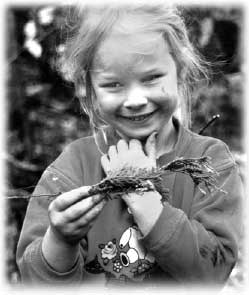
Thanks to support and guidance of Jan Schultz, regional botanist from the US Forest Service, we’ll be working with the Soil Conversation District and local Native American communities to address a new and urgent challenge. Jan served as a botanist for Michigan’s Hiawatha National Forest from 1989-2005 and now works with the Eastern Region of the USFS coordinating efforts to manage and protect natural resources. In 2008-2010 we’ll be launching a recovery of native wild plants (pollinators) back into Northern Michigan’s ecosystem.
One critical but little-known component of the “re-generating” of plants is the cross-pollination of blossoms to produce seeds. Such processes are dependent primarily on butterflies, insects and bumblebees. This vital transaction is being threatened by invasive species, the overuse of pesticides and the loss of natural habitat. Albert Einstein once made the remarkable, frightening insight that without bumble bees and other pollinators, in four years 90% of plant life on earth would be gone and the human race doomed. Here in this corner of a remote, rural Michigan, working with Native Tribal people the Institute will be building butterfly habitat, planting seeds and working with at-risk youth to honor and protect this critical and overlooked process that lies hidden at the core of our ecosystem.
We invite you to consider joining us with a gift of support. Like other Institute projects, we’re “ahead of the curve” with this vision. We’ll need grassroots contributions to make this dream happen. In terms of our environmental projects, it’s one of our best!
Earthkeeper Initiative

The Cedar Tree Institute continued its key role in 2007 alongside the Superior Watershed Partnership in coordinating the interfaith EarthKeeper Initiative. The American Friends Community joined our coalition of faith-based communities in Northern Michigan to make a total of ten traditions that cooperatively carry on this work. Over $500,000 worth of street drugs and unused medicines were collected in three hours at 20 church parking lots on Earth Day in April. In September, World Magazine recognized this effort and named CTI as one of 13 nonprofit, faith-based groups “…doing the hardest work in America.” That same month Lake Superior Magazine awarded the Institute and the Superior Watershed Partnership a 2007 Achievement Award.
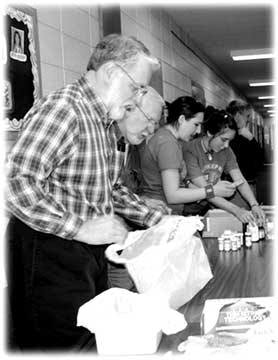
After four years, the churches along with a university student chapter of EarthKeepers are in transition developing an ongoing strategy for 2008. Adopting and protecting rivers and streams, developing habits of energy conversation and continuing to “green” churches with recycling programs and good environmental practices remain priority goals. We are thankful to Kyra Fillmore and Jennifer Simula who, along with a 16-member volunteer interfaith implementation team, have provided key leadership for the coalition of more than 140 congregations setting a standard for environmental consciousness that continues to draw attention from across North America.
For more information on the 2008 EarthKeeper Initiative, call Kyra Fillmore (906)228-2388, Rev. Charles West (906)225-0616, Larry Ziomkowski (906)227-9116, or e-mail Kyra at Kyra.fillmore@gmail.com
In Appreciation
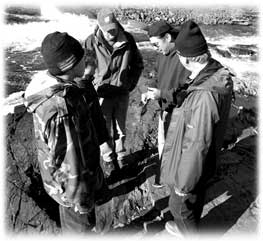
Thanks to the 76 individuals from all walks of life across North America who have quietly helped us with financial gifts to carry on our work in 2007. Our institute chooses not to compete for limited financial resources with other agencies and churches. We exist “outside the radar” and depend on the generosity of those who support the our Institute’s mission. One third of our services are provided on a pro bono basis. We also salute members of the CTI circle, Steve Rose and Greg Peterson who assist us with vital bookkeeping and communication work. Also to Tom Reed, Ray Hasenauer, Mike Grossman and Larry Skendzel who continue to provide valuable support on key projects.
Thank you for reading the Winter 2008 Ecotone Newsletter, the official Newsletter of the Cedar Tree Institute.
